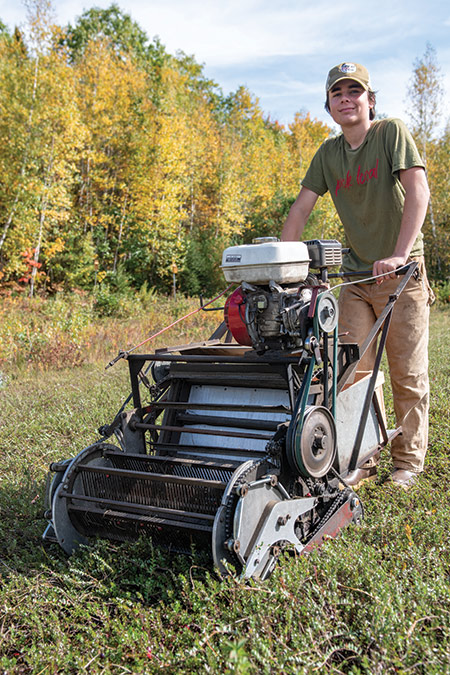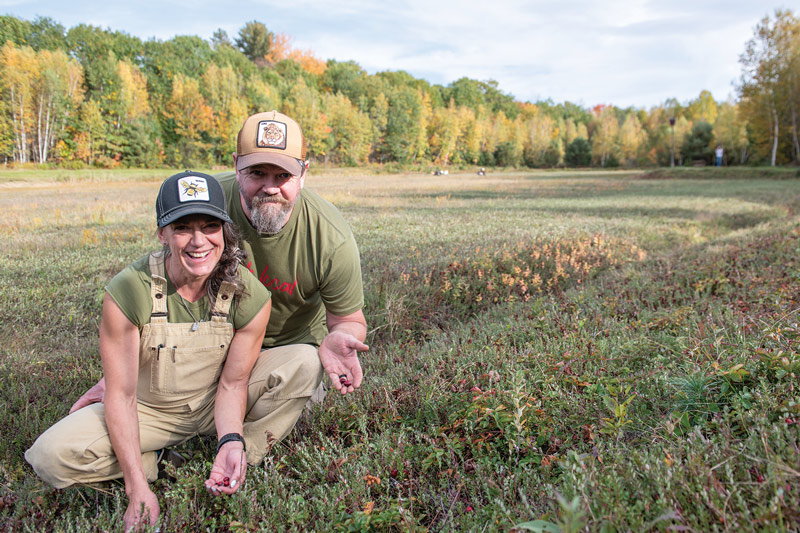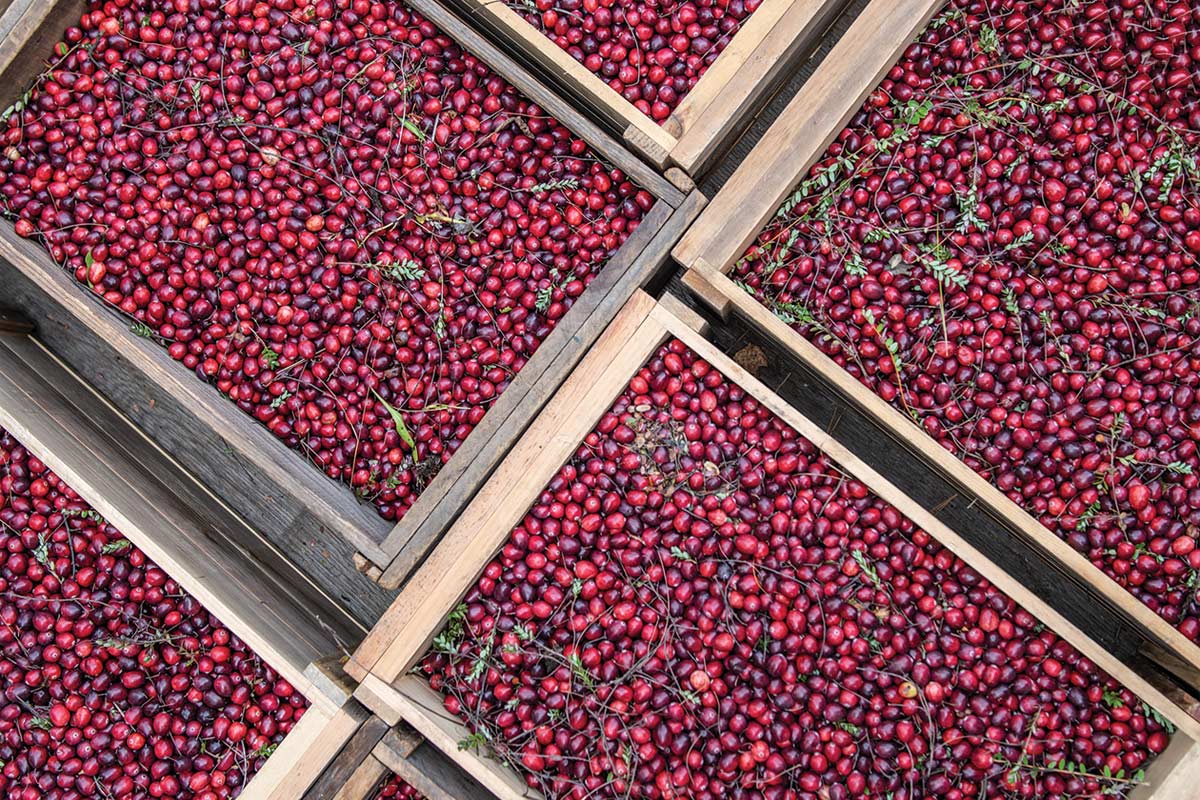By Katy Kelleher
Photos by Kelsey Kobik
From our November 2022 issue
Few fruits are more chronically underrated — or oversweetened — than the bracingly and, some might say, delightfully tart cranberry. The last time you tasted one, was it dried and sugared to mimic a raisin? Mixed with apple in a “cocktail” juice? Or maybe pressed into jelly and served in quivering, cold slices? Cranberry grower Tracyn Thayer realizes properly tart cranberries might be an acquired taste, but she thinks the fruit is best when it can still pucker the cheeks. “We try to highlight their tartness,” she says.

Thayer and her then-husband, Stephen Leen, bought their 16-acre MOFGA-certified organic farm in South Oxford two years ago. It had been called Woodward Farm, for the previous owners, but they changed the name to Birch Bog Farm, for the trees that ring the field. Most cranberries are wet-harvested — fields are flooded so that the fruit can be skimmed off the surface. Wet-harvested berries tend to wind up in juices and sauces and the like, because moisture makes them liable to spoil quickly. Cranberries sold fresh need to be dry-harvested, which is how it’s done at Birch Bog Farm.
The frustratingly philosophical advice passed along by the previous owners, Thayer says, was that “you have to let the bog tell you what to do.” First-time farmers, she and Leen have since been learning as much as they can about growing, harvesting, eating, and cooking cranberries, aided in part by a mentor farmer. “It’s hard to find an organic-cranberry farmer in Maine,” Thayer says. “He’s out in Wisconsin. He’s trying to help me figure out what we can improve on next year. There’s an art to it.” As is often the case with plants, timing is everything. They have to know when to flood the fields, after the plants have gone dormant, and when to drain them, before the spring growth begins. The harvest usually starts in October and continues into early November. This year, the crop is going to be small. Maybe they put the water on too early. Or maybe they left it on too long. Maybe the harvesters damaged the vines. “That’s farming,” Thayer says.



She isn’t too upset. It helps that the couple makes their farming life work by combining incomes — Leen works off-farm as an electrical engineer and Thayer sometimes picks up work as a Registered Maine Guide. Plus, even a small harvest of cranberries can go a long way, and Thayer has learned plenty of ways to enjoy New England’s native sour fruit. She makes juice concentrate, infuses vodka, bakes scones and breakfast bars, chops berries for salsa, dresses fish, and rolls fruit leather. Sugar, when she uses it, is a light touch. “Most people,” she says, “spend too much time trying to make cranberries sweet.” Cranberries weren’t really on her radar before they started farming, she admits, “but now I love the fruit.”
Tracyn Thayer’s Simple (and Plenty-Tart) Cranberry Sauce
Freshly squeezed orange lends subtle sweetness but doesn’t get in the way of the natural cranberry flavor.

Ingredients
1 qt. fresh cranberries
1 lemon, juiced
1 orange, juiced
Instructions
Blend cranberries, lemon juice, and orange juice in a food processor or blender to desired consistency. Serve with turkey, stuffing, and all the rest.
“If you are not quite ready to embrace the tart,” Thayer advises, “you can add white sugar, brown sugar, or maple syrup.” Other possible additions, depending on personal taste, include a whole diced jalapeño, a quarter cup of chopped cilantro, two tablespoons of grated ginger, or a half cup of minced green onion.




